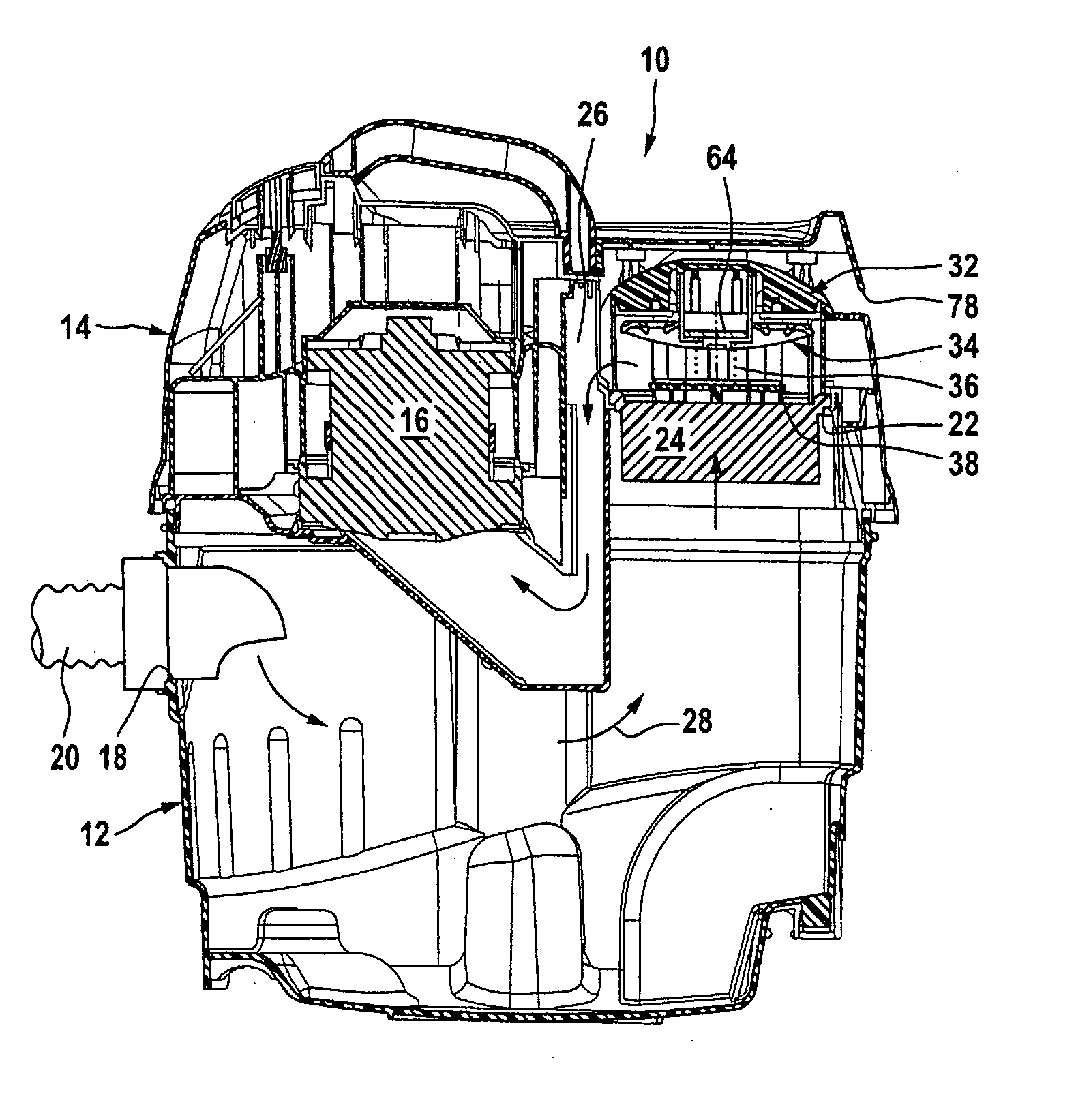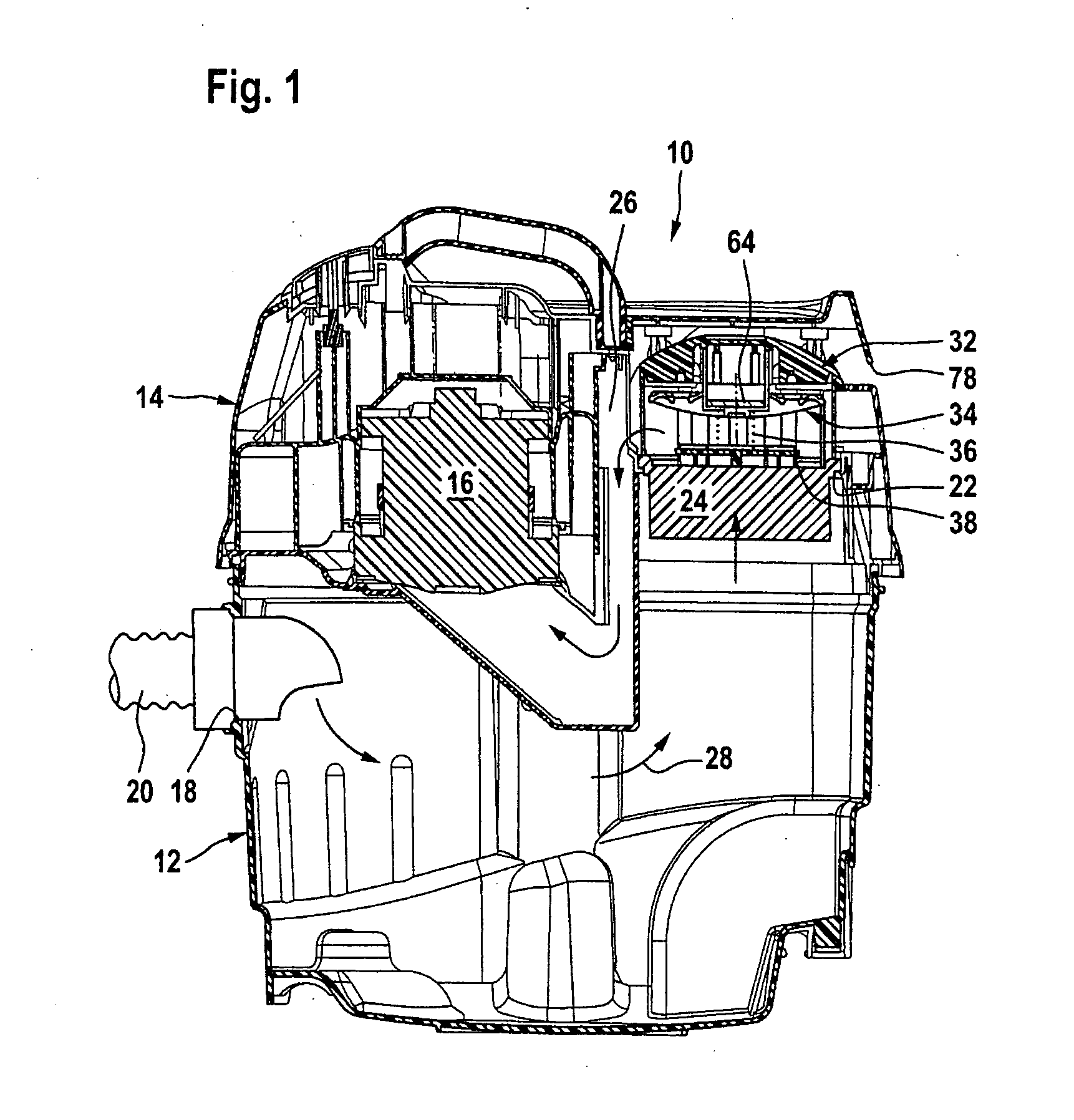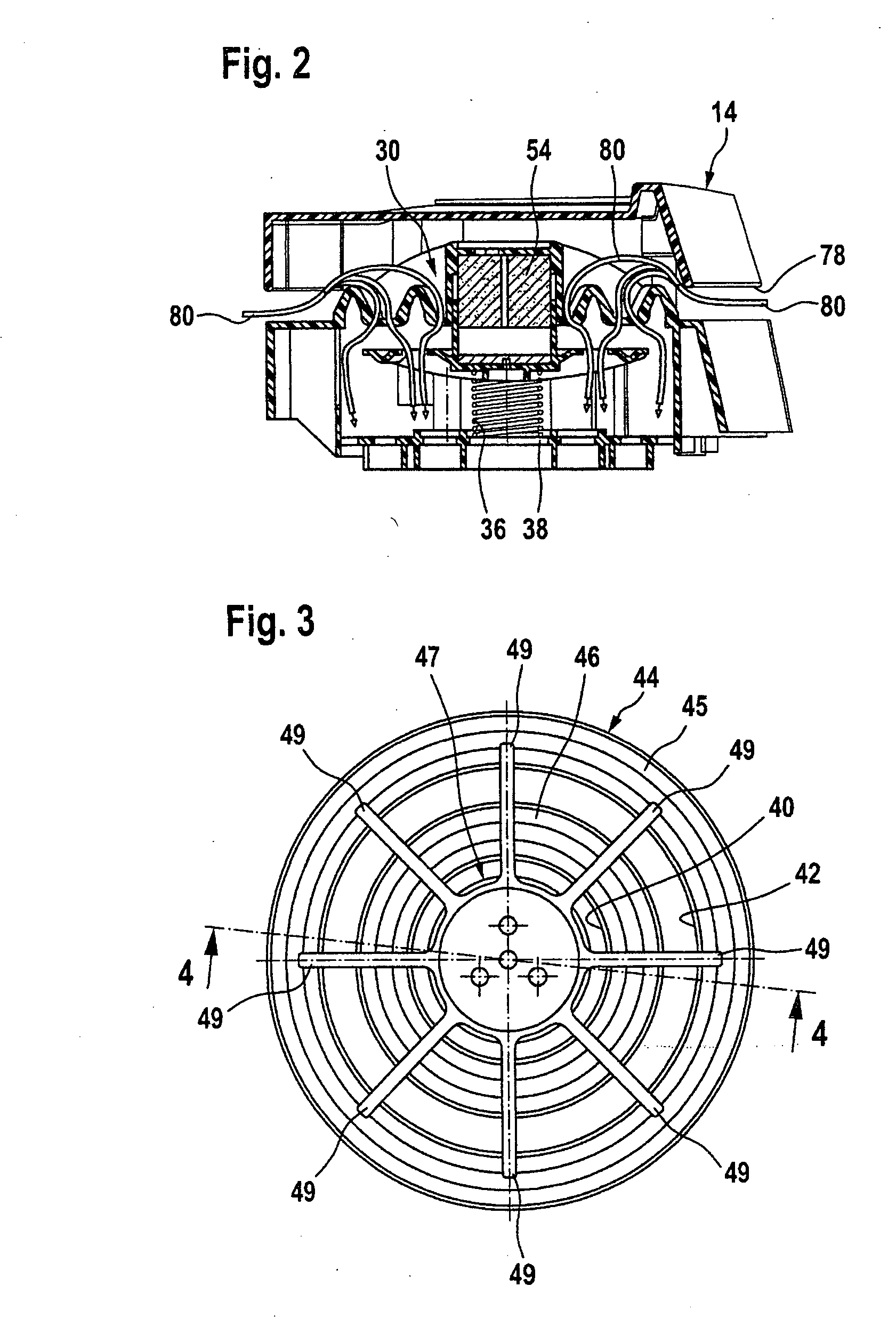Method for cleaning the filters of a vacuum Cleaner and vacuum cleaner for carrying out said method
- Summary
- Abstract
- Description
- Claims
- Application Information
AI Technical Summary
Benefits of technology
Problems solved by technology
Method used
Image
Examples
Embodiment Construction
[0039] Schematically represented in the drawing is a vacuum cleaner 10, with a dirt collecting container 12, mounted on which is an upper part 14, which accommodates a suction unit 16. The dirt collecting container 12 has a volume of approximately 80 l, preferably a volume of about 30 l to approximately 80 l. It comprises a suction inlet 18, connected to which is a suction tube 20, at the free end of which (not represented in the drawing to achieve a better overview) a suction nozzle may be located. Alternatively, it may be provided that the suction tube 20 is connected to a working tool, for example a power drill or a masonry router, so that dust produced during the operation of the working tool can be sucked away.
[0040] The upper part 14 forms a suction outlet 22 for the dirt collecting container 12, a folded filter 24 being held on the suction outlet 22, which filter is followed by a suction line in the form of a suction channel 26, via which the folded filter 24 is in flow comm...
PUM
| Property | Measurement | Unit |
|---|---|---|
| Fraction | aaaaa | aaaaa |
| Time | aaaaa | aaaaa |
| Time | aaaaa | aaaaa |
Abstract
Description
Claims
Application Information
 Login to View More
Login to View More - R&D
- Intellectual Property
- Life Sciences
- Materials
- Tech Scout
- Unparalleled Data Quality
- Higher Quality Content
- 60% Fewer Hallucinations
Browse by: Latest US Patents, China's latest patents, Technical Efficacy Thesaurus, Application Domain, Technology Topic, Popular Technical Reports.
© 2025 PatSnap. All rights reserved.Legal|Privacy policy|Modern Slavery Act Transparency Statement|Sitemap|About US| Contact US: help@patsnap.com



